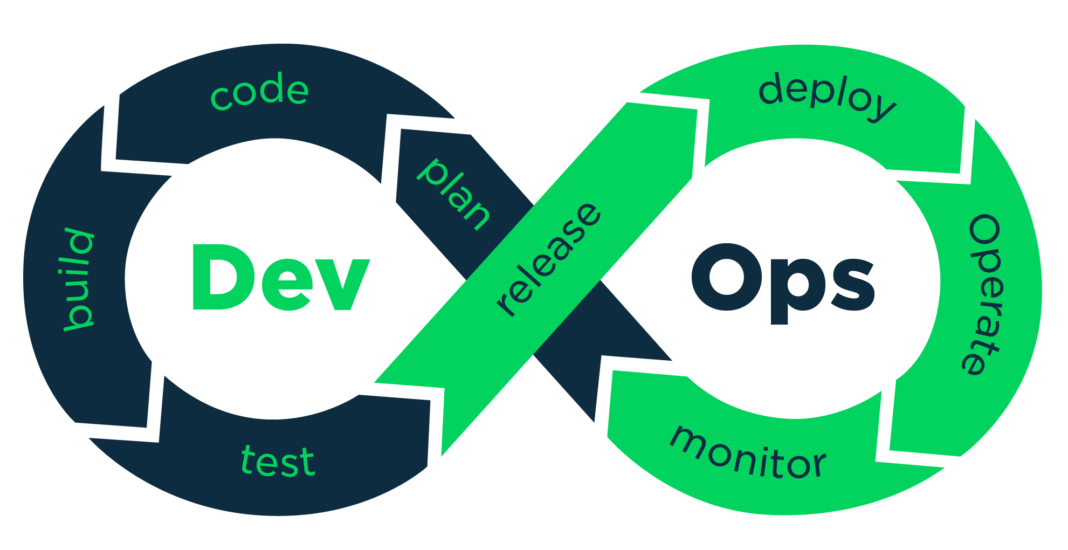Real-time scenarios in DevOps in the fast expanding IT sector, the need for fast and smooth software is growing. Changes in trends and changing expectations of consumers have become one of the most significant challenges that the digital transformation of companies is working to solve. IT solutions have therefore adopted new methods to accelerate the delivery and speed of software-based products and services. Additionally, the DevOps method has become the only solution to more efficient, speedier and more secure software. It integrates a consistent strategy and practice for operation and development throughout the entire lifecycle of the application, while ensuring security and quality.
If you’re a software engineer, IT expert, or project manager looking to ascend the ladder of success in your career enrolling in an DevOps training course can enhance your chances of advancing in your career. You will not only have the possibility of being promoted within your workplace, but also secure lucrative positions for companies that employ the DevOps method of software development.
An Introduction to DevOps
DevOps is a method of software development that involves process of Continuous Development Monitoring, Deployment Integration and Testing of software throughout its lifecycle of development. The purpose to achieve DevOps is to create top-quality software within a shorter period of development to ensure increased ROI and client satisfaction. This approach eliminates the silos that exist between the operations and development teams and ensures a smooth software launch.
The Business Benefits of DevOps Implementation
DevOps is among the most efficient techniques for managing teams and projects. If implemented correctly it can give an advantage in the competitive market for the company.
Here are the main advantages of an DevOps strategy:
Higher performance
The DevOps team boosts the performance of software by releasing frequently, reducing errors and rework times and a shorter time-to-market. Teams perform better with more engaged employees and continuous delivery of software.
Improved collaboration
The DevOps culture encourages collaboration between the operations and development teams as well as other stakeholders to provide transparency feedback, transparency, and shared accountability. It is simple to reduce the time-to-market cycle to speed up time-to-market.
Cost-cutting
A DevOps method helps reduce production costs since maintenance and software updates are unified for quicker deployments. The best use of resources because there is speedy resolution of issuesand waiting periods or delays are minimized.
High-quality client experience
DevOps method accelerates the process of developing software and adapts to any uncertain market conditions or changes in preferences of clients. Rapider innovation and constant iterations guarantee better product rollouts as well as updates.
What are the challenges that DevOps can Address?
The most difficult part of the implementation of DevOps is that people rush into it without understanding the way DevOps operates and how it can be implemented across the lifecycle of software.
While every business is unique and has its own set of business issues There are some basic issues that DevOps can solve.
A few crucial solutions to DevOps adoption:
Provides greater benefit to clients
DevOps integrates development of software with business goals. Its emphasis on quality, innovation and continual improvement provide more value to customers with top-quality software, seamless updates, and a rapid response to changing market conditions and competitive pressures.
Additionally, ongoing testing produces superior products that provide the best customer experience.
Reduces the time to cycle
One of the benefits of DevOps is the speed at which it is delivered. It allows for faster deployment of new features and rapid finalization of projects. Because DevOps teams are constantly testing as well as deploy features, they are able to repair bugs and fix issues when they occur for speedy response to customers. This can reduce the time to cycle since iteration is integrated in the system.
Accelerates time to reach market
Changes in business models mean that processes need periodic review to improve workflows. The best way to speed up the speed of delivery of software is via end-to-end automation, which DevOps can provide.
Teams collaborate to speed up the development process as well as scaling. This decreases the time it takes to respond to requests from customers and the complexity during the rollout.
Encourages continuous improvement
The fundamental principle behind DevOps is aligning resources and personnel to achieve new efficiency. DevOps facilitates collaboration between operations and development teams to ensure rapid release or updates and deployment. Teams are able to innovate faster to ensure continuous improvement and timely delivery.
Reduces Development Cost
In today’s highly competitive business world in which development costs are rising, reducing them is an absolute necessity. DevOps helps to cut down on costs. Because DevOps professionals train in a variety of disciplines, their workflows are fluid, which increases overall efficiency. This prevents costly, excessive revisions, decreases expenses for managing processes, reduces the cost of updating features or services and cuts down on costs related to product development and deployment. Achieving business goals is a great way to meet targets within a specified timeframe. DevOps helps to create the right environment of cooperation between development and operations teams to improve business value and lower overall expenses.
Real-time Scenarios in DevOps
The implementation of DevOps practices doesn’t mean the software development or rolling out process is seamless or error-free. The entire development process is faced with a variety of real-time issues when taking on DevOps methods.
IT executives and DevOps practitioners are always seeking ways to improve processes and enhance the process of developing software by addressing the common issues throughout the different phases of software development, including Continuous Integration and Continuous Delivery as well as Continuous Testing.
Since tech teams are able to perform better and faster, companies are shifting to DevOps. However, when unexpected issues or demands arise and they are unable to meet the new challenges without sacrificing the quality work. This is why it is essential to be aware of real-time scenarios in DevOps and ways to manage the risks to ensure successful outcomes.
Here are some real-time scenarios that occur during the crucial phases of DevOps methods:
CI (Continuous Integration) in DevOps real-time scenarios
CI is a DevOps software development method in which multiple developers share their changes to code in the same repository times per day, after the automated build, they run test, and then verify the code.
A. If CI is thought to be as counterproductive
Teams in development have CI tasks like the release of features that are new, meeting timeframes or fixing problems. Sometimes, they do not resolve bugs that they believe are insignificant and believe it is detrimental to the smooth procedure and the speed. But, this could affect the process of adaptation.
It can be avoided through:
- ensuring that everyone is aware of addressing even minor bugs in CI
- Learn how developers can benefit from flexibility and transparency
B. When the testing patterns aren’t as consistent.
Continuous integration implies increased checking and testing, and also more scenarios. Therefore, developers must not just solve bugs, but also write tests. The delay can cause the developer to switch to manual testing if not keeping up with the development process is difficult.
It is possible to avoid it through:
- Writing test cases starting from the beginning
- The importance of test cases is comparable with the codebase
C. When developers overlook error messages
When developers are overwhelmed with an avalanche of CI notifications that they receive, they tend to turn off or forget about the notifications. This means that they miss crucial updates. Inconstantly checking for relevant errors could lead to developing software that is not receiving feedback, leading to the possibility of rollbacks and massive waste of time and money.
It is possible to avoid this through:
- Notifying only relevant and important updates
- Notifying developers who are responsible for fixing errors
Continuous Testing (CT) in DevOps real-time scenarios
Automated tests are run each time code changes are made. It occurs frequently and regularly at each step of process of software creation lifecycle, as component of the process of software deployment. The goal is to get constant feedback, and to ensure that any there are no errors before the software is made available to the production.
A. If excessive effort is taken up with specific requirements
A thorough understanding of the requirements is essential to the process, since software can be improved by avoiding rollbacks. A lot times are spent getting the team to agree to the specifications for the requirement that takes a lot of time and stops the development of additional tests.
This can be avoided through:
- Utilizing model-based testing methods in the beginning of the sprint
B. If feedback loops are not as numerous.
In CT testing, you require automation that is transparent about the results as well as execution. It is essential to have regular feedback loops through the entire software development lifecycle. This allows you to address issues early and allow the software to be released with less errors.
It’s achieved through:
- Live-time dashboards to automate reports and constant feedback
CD (Continuous Delivery) in DevOps real-time scenarios
CD is the term used to describe the practice of software development in which changes to code are automatically constructed, tested, and then re-built for release.
A. If deployments are too long
Sometimes, deployments last an extended time, which means that deployments are not as frequently.
This can be avoided by:
- Determining the process of deployment with the help of collaboration
- Automating the process to create the most likely CD. This dramatically reduces the time required for deployment. It also opens the way to more frequent deployments
B. If production monitoring fails
The majority of monitoring tools are designed to contain non-relevant production data. In addition the tools don’t specify what data to be monitored or what metrics to use.
Another problem is that software requires monitoring after it has been delivered. The inability to log messages creates an issue for software developers to assess the performance of the software and to fix any bugs.
It is possible to avoid this confusion avoided by:
- Then, decide what you want to keep track of
- Then, what data should be included in the monitor log?
- Additionally, you can put your controls in place by using tools for performance management
Summary
DevOps real-time scenarios provide you with an understanding of the typical or possible issues you might face when you are implementing DevOps implementation. The business benefit associated with DevOps can be seen in the decrease in time to deliver software, better quality, and higher productivity of both the operations and development teams, companies are working to automatize their software deployment and release processes by using DevOps. The ability to learn DevOps will increase your chances of success in the field of software.






























